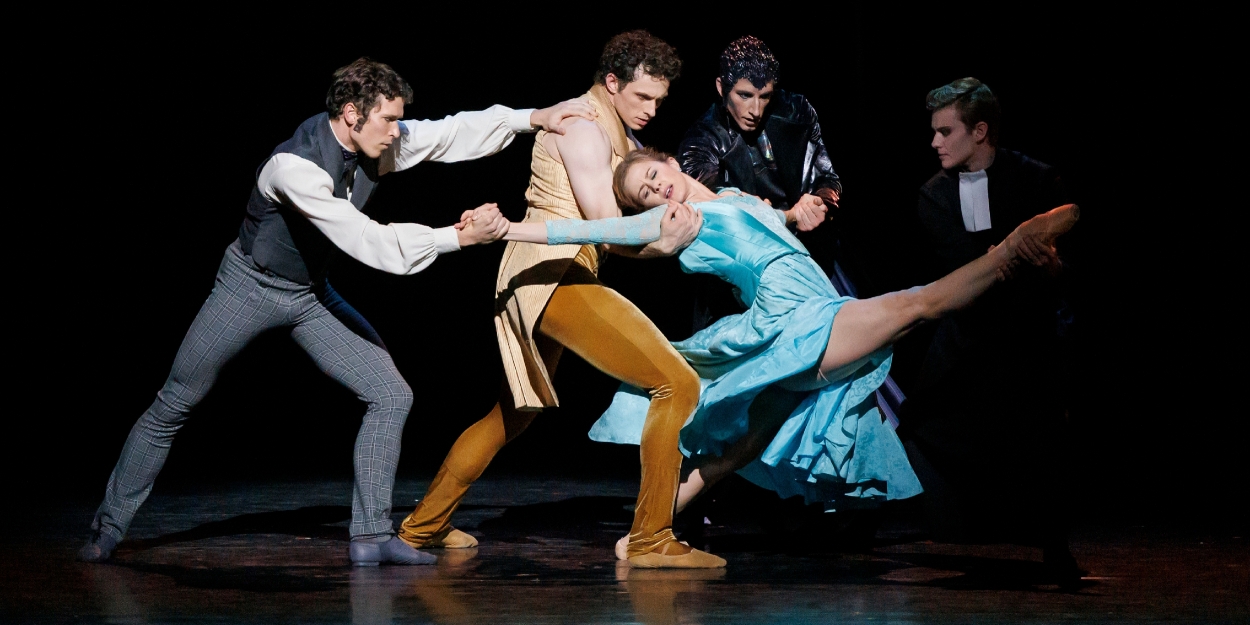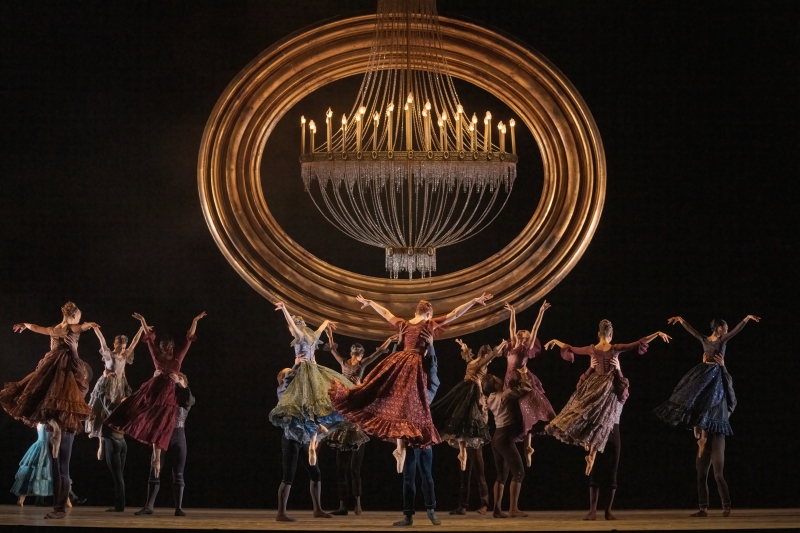Review: The National Ballet of Canada's EMMA BOVARY, ANGELS' ATLAS at the National Arts Centre
A sensory experience that will will leave audiences reflecting on the meaning of life and what matters most to them

This week, Ottawa is being treated to a double bill of ballets at the National Arts Centre: Emma Bovary and Angels’ Atlas. Although they were both created for the National Ballet of Canada by female choreographers and are presented here together, they evoke entirely different emotions. Emma Bovary is shown in the first half and, at just over an hour, is the longer piece. After intermission, the 27-minute Angels’ Atlas is much more abstract, but no less compelling.
Emma Bovary, directed by Helen Pickett and James Bonas, is a spellbinding, almost surreal interpretation of Gustav Flaubert’s 1857 novel, Madame Bovary. In the ballet, we find Emma (Heather Ogden) enduring a humdrum existence with her husband, Charles (Josh Hall), his mother (Chelsy Meiss), and young child, Berthe (a white marionette, whose movements are controlled by Sophie Lee, Ross Allen, and Emma Ouellet). This monotony is ingeniously represented with the dancers gathered around the dinner table, the choreography’s (Helen Pickett) speed steadily increasing to show the passage of time in an environment almost entirely devoid of colour to fit Emma’s grey mood.

and Scott McKenzie in Emma Bovary. Photo by Bruce Zinger.
Courtesy of The National Ballet of Canada.
As Emma unsuccessfully seeks passion in her life, she is lifted into a dreamlike state; shortly after she returns to earth, she encounters Rodolphe (Christopher Gerty), a man who seeks only to conquer Emma, but embodies the pleasure she craves. Emma rejects her daughter’s advances, unceremoniously pushing her away. As Rodolphe and Emma’s affair continues, Emma purchases goods from Monsieur Lheureux (Spencer Hack), whose name, ironically, indicates happiness. Lheureux and his six sales associates are all dressed in black with undertones of purple, symbolizing both the luxurious goods they purvey and the power they will come to wield over Emma as she pays them with IOUs. Lheureux and his henchmen recall the deadly sins that threaten to overcome Emma: lust for Rodolphe, envy and greed in her desire for material possessions, gluttony as she purchases more chairs than she could ever possibly need; sloth demonstrated in her open disregard of Charles - and especially Berthe. Lheureux himself can be seen as wrath, as he calls in his debt and Emma is utterly defeated. The only thing remaining is Emma’s pride, leading her to her tragic destiny.
The set design and costumes (Michael Gianfrancesco) were stunning and enhanced the storyline, the occasional flash of golden colour in bright contrast against Emma’s dreary life. The ballroom scenes were a whirlwind of excitement, both for Emma and the audience. A scene where Emma attends an opera was wonderfully staged, with the opera singer (Chelsy Meiss) suspended in an elevated, gilded frame. As the scene transforms into a nightmare, a cloud of red gushes from the frame, the chandelier thrown askew; as the dancers, now with pig’s heads, chase after Emma, symbolizing the precariousness of her situation, as her gluttony threatens to overcome her.

Courtesy of The National Ballet of Canada.
Emma Bovary is told from Emma’s point of view and serves to humanize her despite her flaws, rather than demonizing her for her choices. The choreography and the music (score by Peter Salem, conducted by David Briskin with the NAC Orchestra,) work together flawlessly to drive the narrative forward and clearly put the audience into Emma’s state of mind.
As stated above, Atlas’ Angels, choreographed by Crystal Pite, is more abstract than its counterpart. A pulsing, black and white wall of light illuminates the dancers’ movements, which are synchronized, fluid and, at times, even abrupt. The light rising and swirling in the background is full of contrasts and organic movement, somewhat resembling a collection of souls moving among the cosmoses. A dancer collapses, writhing in agonizing movements until they are seemingly dead, only to be reborn again. The other dancers’ movements suggest initial sorrow, followed by renewed vision and a beating heart. The dancers convey a feeling of inter-connectedness – that the actions of one person causes an automatic reaction in another. The dancers reach out, offering support while trying to save each other from the inevitable, despite their individual fear of the unknown. They fall, one by one, as each one’s journey becomes complete. When final dancer collapses for the last time, the light goes out and we are left to wonder what really happens after we die. Angels’ Atlas’ music is flanked by classical vocal compositions by Pyotr Ilyich Tchaikovsky and Morten Lauridsen. Owen Belton’s score is composed of electronic music that features other sounds, such as a heartbeat, bells and clicking noises to further enhance the senses.
The National Ballet’s Emma Bovary and Angels’ Atlas are powerful stories, even though the latter leaves much to the viewers’ own interpretation. Both ballets will leave audiences reflecting on the meaning of life and what matters most to them. A sensory experience, Emma Bovary and Angels’ Atlas are in Ottawa all too briefly; tickets for performances through February 3rd can be purchased here. For more information about upcoming dance events at the National Arts Centre, please click here.
Reader Reviews
Videos

